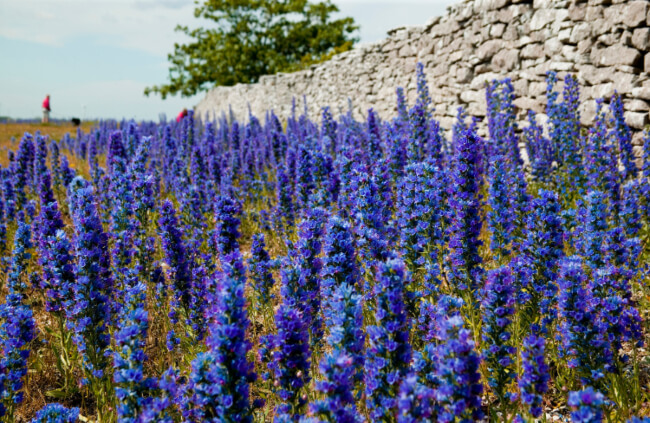One of the grandest spring-flowering plants is the Echium. It’s large, showy blooms mimic feather dusters yet hold themselves ever so seriously poised above leather-leafed stalks.
Each spike is made up of tiny florets that burst open and remain open for a few weeks enjoying the new-found sun before dying off to a rich brown hue.
More...
Getting to Know Echiums

The Echium is one of those plants that always seems to grab your attention when it’s available in a garden. Its architectural beauty, both from the foliage clumps and the parading spears, is an obvious winner when it comes to adding them to any garden.
Echiums are part of the Boraginaceae family and can be easily propagated from non-flowering cuttings in autumn. They prefer a well-draining soil, that doesn’t need to be too rich in humus, and a minimal watering schedule.
Different Ways of Growing Echiums
Many cooler climate gardens are able to grow them as annuals (E. wildpretii is a great variety for this) while those who enjoy warmer climes opt to grow them as biannuals or perennials (E. candicans is a popular variety for these regions). Growing them over many years allows the clump to mature and produce an abundance of bloom.
Echiums are a favourite of termites (white ants) so if you have problems with these pests getting into your house timbers, planting an Echium as an “offering” can help keep them under control. It means you will eventually lose your Echium plant, but it will save your house.
How to Care for Your Echium plant

Your Echium will thrive on neglect provided they are given enough moisture. They prefer good draining soil but most sandy loams devoid of nutrition will suit them fine. If you’ve had success growing borage before then you’ll quickly find that these family relatives have similar requirements.
Full sun is another pre-requisite for caring for your Echium although provided they get a good 6 hours in sunlight they should still perform quite well. Growing these in shade will result in lots of rotting foliage and cause fungal problems for this plant.
Transplanting your Echium is a dangerous procedure as they don’t take too well to being moved. The best option is to take cuttings in autumn or propagate through soil-layering which works to great effect.
Cut your spent flower spikes at the end of summer and feed with some well-rotted compost or a slow-release fertiliser.
Echium plantagineum as Noxious Weeds
Most Australian farmers would be very aware of the introduced Echium plantagineum aka “Paterson’s Curse”. Yet not only is it in Australia that E. plantagineum has been relegated to the noxious weed registry.
Published on June 6, 2023 by Gary Clarke
Last Updated on September 23, 2025




